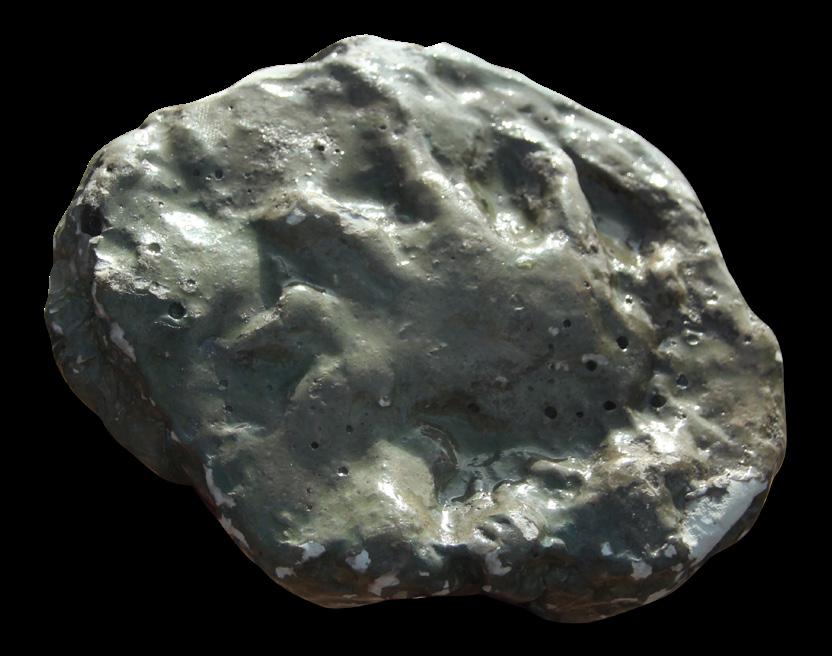
5 minute read
Dinosaur Island
PEI’s new fossil hunting tour
STORY AND PHOTOS BY DARCY RHYNO
I’m standing on a 10-metre-long tree trunk that fell 300 million years ago. It’s wide at the base and stretches out as straight as it was tall. The top is nowhere to be seen among the ordinary rocks on this rough red beach, but it must have been a giant in a forest of giants.
“Pretty crazy,” says geologist Laura MacNeil. “Here we have PEI’s largest fossil. It starts right here and goes all the way to...” She takes a dozen steps from the base of the tree to where I’m standing. “To here. It’s a very cool site. I never get sick of seeing these fossils.”
MacNeil has worked as an interpreter at Joggins Fossil Cliffs in Nova Scotia and the Royal Tyrrell Museum in Alberta. After returning home to the island, she started Prehistoric Island Tours. Today’s group tour is at a location she prefers not to disclose.
Unlike those other famous Canadian locations, PEI has no natural history museum. The most significant of the recent discoveries on the island are in storage at PEI National Park, but with no other resources, she fears sites like this could suffer from too much public attention. This 75-minute tour is the only way to see them.
The tree I’m standing on, she tells us, is Walchia. “It’s literally the earliest known conifer tree in the rock record. Handing around an artist’s rendition of the living tree, she adds, “If you’ve ever heard of a Norfolk Island Pine, they look very similar. We’ve found some fronds from the tree on PEI, but they’re softer and you need special conditions to preserve them.”
A boy on the tour runs up to MacNeil with a handful of fossilized wood. Two species are quite common on this beach— Walchia and a type of tree fern. Everyone on today’s tour has found at least a few pieces of both. Fossils of the two species look completely different from each other. Tree fern fossils often have sets of tightly packed circles, which hint at the ancient growth patterns. Rather than trunks, tree ferns stand upright on small roots bound together. When these trees fell, PEI was a steaming swamp in the middle of the supercontinent, Pangea.
“Imagine you’re standing right here 300 million years ago,” MacNeil says. “The temperature is 40°C. The closest
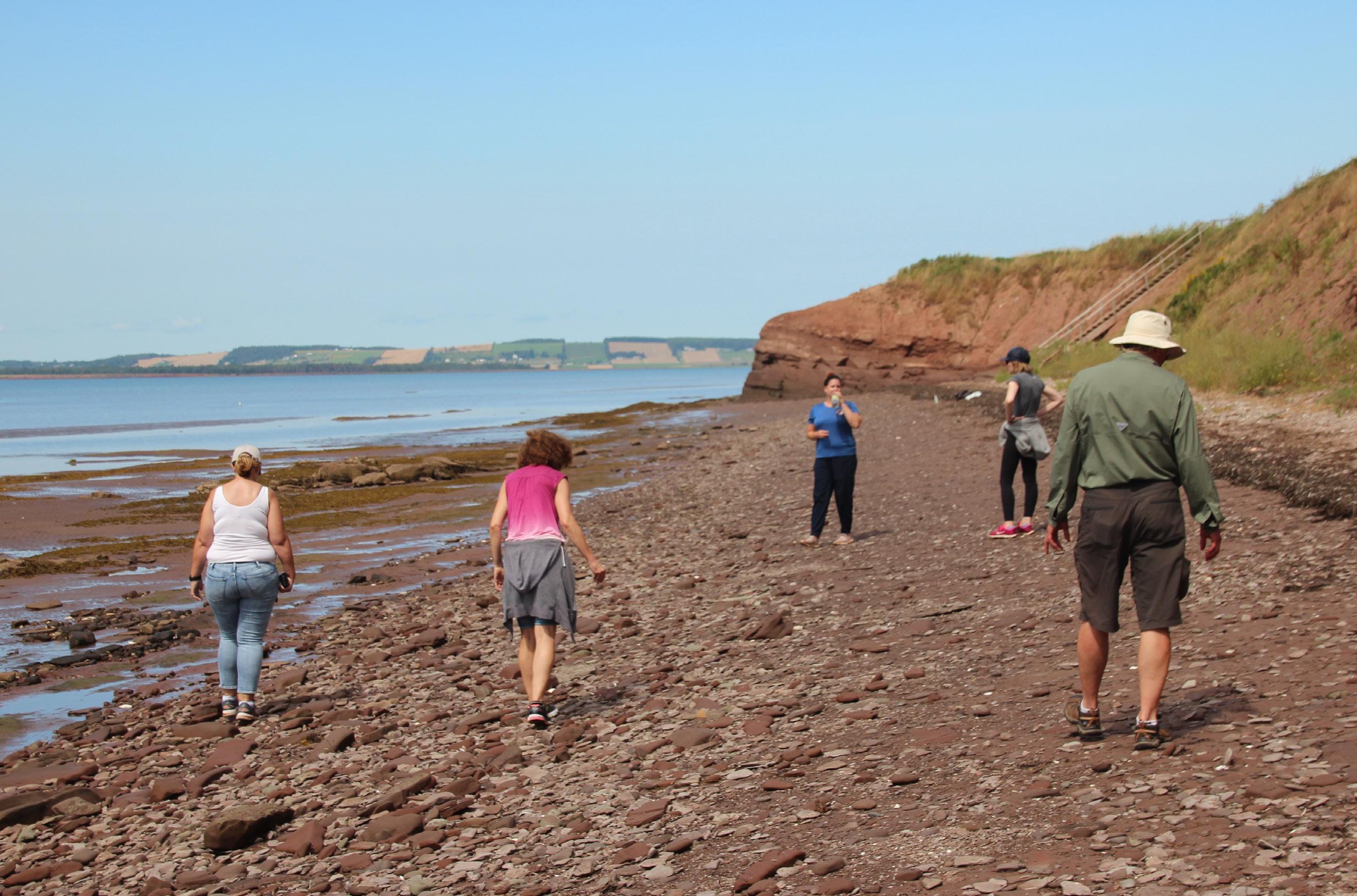
Scouring the beach for fossils on Prehistoric Island Tours. Top: cast of a pre-dinosaur creature that lived on what is now PEI.
Part of the giant tree fossil.
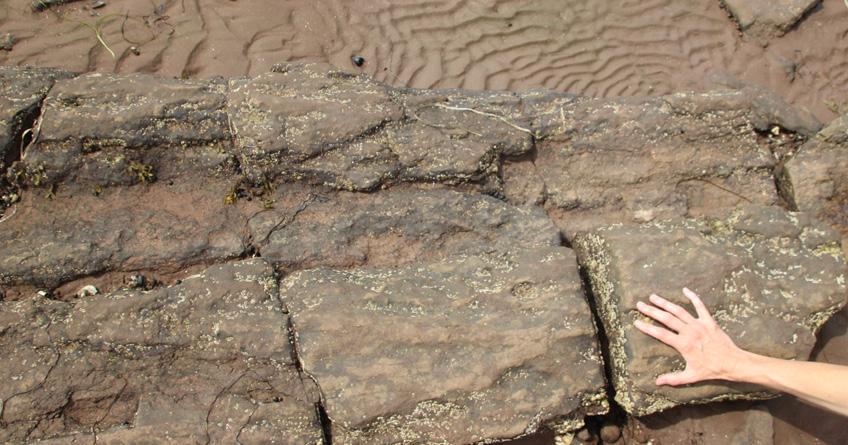
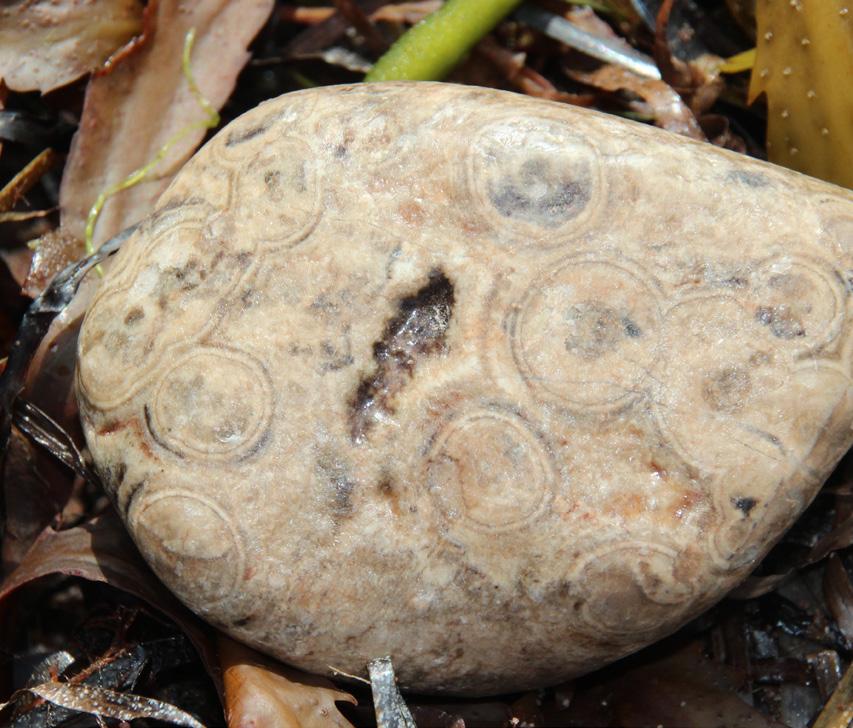
Petrified wood picked up off the beach.

Cast of a pre-dinosaur creature.
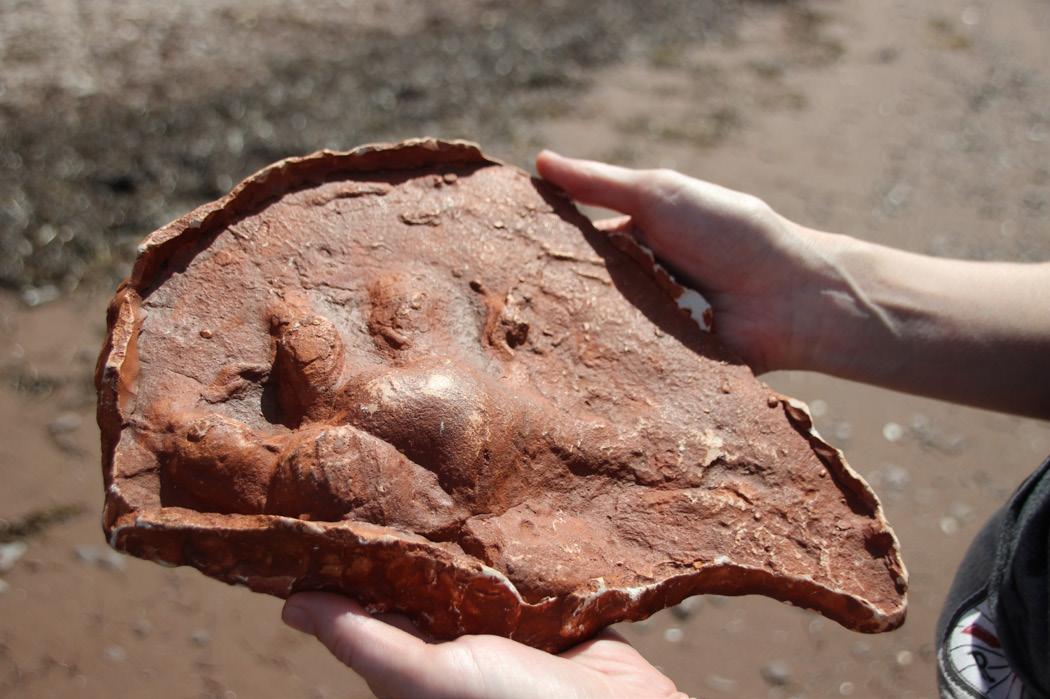
ocean is 500 kilometres away. You can see mountains in the distance. You don’t see any grass or flowers because they literally didn’t exist yet, but the ground is covered in big, fluffy ferns.”
MacNeil digs into her pack. “You turn around and you see this.” She holds up a picture of a prehistoric animal that looks like a dinosaur on all fours with a huge, spiny sail on its back. “This is Dimetrodon borealis, the largest predator that lived on PEI in the Permian period. He’s like nothing alive today. He’s not a dinosaur. He actually lived before the dinosaurs.”
The boy returns, excided to show MacNeil yet another handful of fossilized wood. After we all marvel at his find, he runs off in search of more. MacNeil returns to her pack, pulling out a rock the size of a dinner plate with a footprint in it. “The most important rock on PEI is clay stone. Clay is the tiniest sediment on Earth. To turn into stone, it needs to be in extremely still bodies of water. We think these layers formed in ancient watering holes like an African savannah.” From those distant mountains, fine sediment drifted in rivers to settle in shallow waters here, slowly filling in footprints like this one.
Footprints are rare, but fossilized bone is all but unheard of on PEI. Still, there are a few. MacNeil spins the unlikely tale of one of them, the world’s first discovery of a dimetrodon bone. “In 1845, a farmer named Don McLeod was digging a well. When he got to about 22 feet, he pulled up a block of sandstone. In it was a dimetrodon skull.”
She pulls yet another artefact from her backpack, a copy of the original fossil. “What are the chances that exactly where he dug, he found the only dimetrodon bone that has ever been found on PEI, the first in the world.” An American bought the fossil from the farmer for $30, the equivalent of $1,000 today. It’s been in a Philadelphia museum ever since. “Today, it’s forbidden to remove and sell fossils from sites like this in Canada.”
Two other bizarre animals lived in those steamy forests, MacNeil tells us. One was a lizard-like creature almost a metre long. Another was a big, lumbering turtle-like creature. “See?” she says, pointing to yet another fossil from her pack. “The toes
Tree fern fossil.

Standing on both ends of the giant tree fossil.
are round. That’s a herbivore. The only candidate for this footprint is my favourite prehistoric PEI creature. You’re gonna love him. Diadectes!”
Suddenly, a cry from one of the participants upstages the introduction of Diadectes. When the woman holds up a disc the size of a quarter, MacNeil becomes very excited. She tells us it’s the second such find on one of these tours and declares with some urgency, “We need to record the GPS of this item. It’s definitely copper because it’s the only thing that oxidizes green.” It could be a coin or a button dating back as far as the 1790s. It’s not a fossil, but the find is a great addition to a tour already rich in discoveries and gives us a sense of the unfathomable breadth of history in this single kilometre of shoreline.










